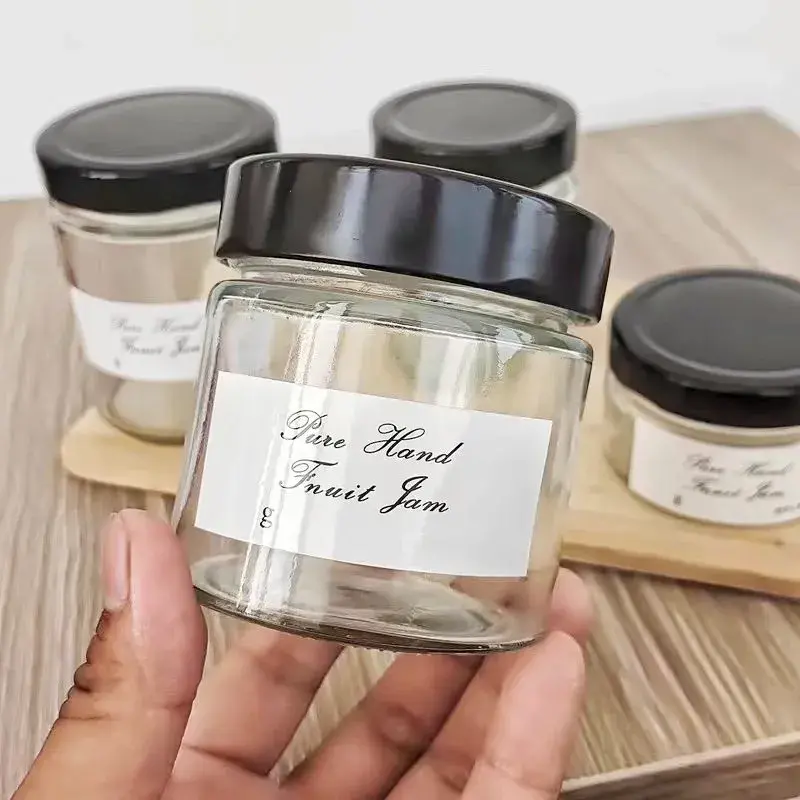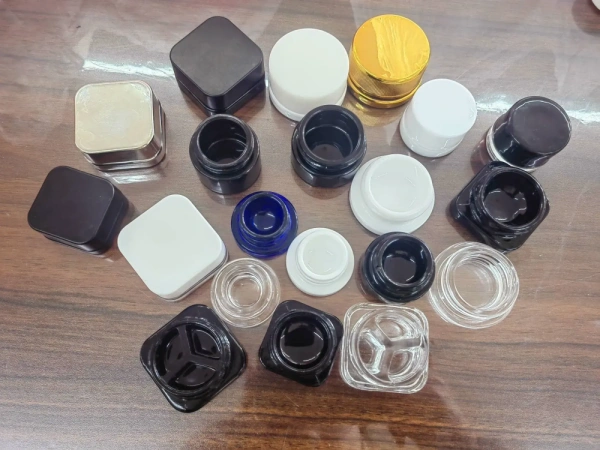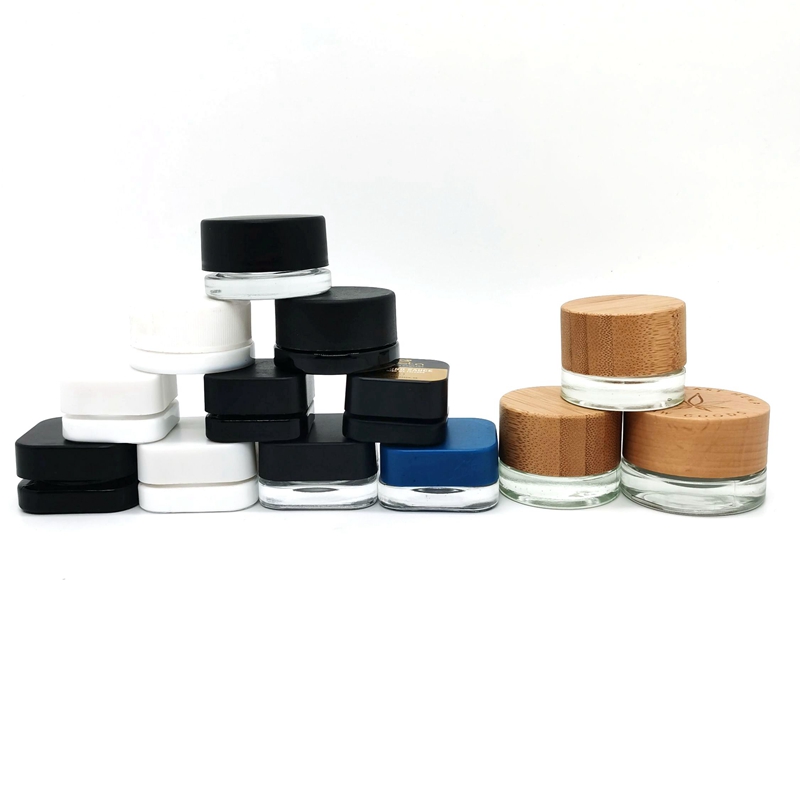Welcome to the potent and fascinating world of cannabis concentrates! If you've ever wondered what a "dab" is or how a sticky, golden extract is made, you're in the right place. As a manufacturer of glass containers for this booming industry, I, Allen, have had a front-row seat to the incredible evolution of cannabis concentrates. This guide is designed for business owners and procurement leaders like you, Mark, who need to understand the products you're sourcing packaging for. We'll break down everything from the ancient art of making hashish to the high-tech science of modern extraction. Understanding these products is key to choosing the right packaging, ensuring quality, and ultimately, succeeding in this competitive market.
What is a Cannabis Concentrate, and Why is it So Popular?
So, what exactly is a cannabis concentrate? Think of it as the essential essence of the cannabis plant. A concentrate is any product made by processing the cannabis flower to strip away excess plant material, leaving behind only the most desirable compounds: cannabinoids and terpenes. These are concentrated in tiny, mushroom-shaped glands on the plant's surface called trichomes. The final product, the extract, is a highly potent substance that can contain THC levels ranging from 50% to over 90%, compared to the 15-25% found in typical cannabis flower.
The popularity of concentrates stems from this high potency and purity. Users can achieve their desired effects with a much smaller amount of product, leading to a more efficient and often more flavorful experience. The extraction process preserves the terpenes—the aromatic compounds responsible for the plant's unique scent and taste—resulting in a vibrant and nuanced flavor profile that is often lost when smoking flower. This potent form of cannabis has created a whole new subculture within the broader cannabis culture, focused on dabbing and vaporizing. For businesses, this means a growing demand for specialized products and packaging.
This process of isolating the trichome heads is the foundation of every cannabis concentrate. Whether through a simple mechanical process or a complex chemical extraction, the goal remains the same: capture the pure power of the cannabis plant. The resulting extract can take many forms, from brittle shatter to creamy budder, each offering a unique experience.
What is the Long History of Hashish and Other Early Concentrates?
The concept of concentrating cannabis is far from new. The history of concentrates dates back thousands of years, with the earliest known form being hashish. The history of hashish is rich and storied, originating in regions like Persia, India, and China. Ancient cultures discovered that by rubbing cannabis flowers between their hands, they could collect the sticky resin—the trichomes—to create a potent, condensed block of hash. This traditional hash making was the world's first solventless extraction method.
This ancient hash was consumed in various ways, often eaten or smoked in pipes. It played a significant role in social, spiritual, and medical practices for centuries. The process was simple yet effective: agitation and collection. This same principle of mechanically separating the trichome gland from the plant material is the ancestor of modern solventless techniques.
From this ancient practice, we see a direct lineage to products we know today. For example, kief—the loose powder that collects in the bottom of a grinder—is essentially unpressed hash. The evolution from hand-rubbing to modern techniques shows a continuous journey toward purity and efficiency. This long history grounds the modern cannabis industry in a tradition of innovation, constantly seeking better ways to capture the plant's essence.
How Are Solvent-Based Cannabis Extracts Made?
The modern era of concentrates has been defined by solvent-based extraction. This extraction method uses a chemical solvent to dissolve the cannabinoids and terpenes from the plant material, creating a highly potent and often very pure extract. The most common solvents used in cannabis extraction are butane, propane, ethanol, and carbon dioxide (CO2).
The process generally works like this:
- Cannabis plant material is placed in a vessel.
- A liquid solvent is passed through the material, stripping the trichomes and their valuable compounds.
- The resulting solution, rich in cannabinoids and terpenes, is collected.
- The mixture is then purged, a critical step where heat and vacuum are used to remove any residual solvent from the final product.
This extraction method is responsible for many of the most popular concentrates on the market. The specific solvent used and the post-extraction techniques determine the final texture and consistency of the cannabis concentrate. Products like shatter, wax, and live resin are all made using a solvent. The quality of a solvent-based extract is heavily dependent on the skill of the extractor and the quality of their equipment, as improper purging can leave behind harmful residues.

What Exactly is BHO, and Is It Safe?
When you hear people talk about concentrates, the term BHO often comes up. BHO stands for Butane Hash Oil, and it refers to any cannabis concentrate made using a solvent like butane. This category includes some of the most recognizable forms of extract, such as shatter, wax, and budder. The process of making butane hash oil is a perfect example of a solvent-based extraction.
The safety of BHO has been a topic of debate, largely due to early, unsafe "open-blasting" methods where amateurs would perform the extraction in poorly ventilated spaces, leading to explosions and fires. However, the modern, legal cannabis industry operates under strict safety protocols. Professional labs use closed-loop extraction systems, which contain the flammable butane and recycle it, preventing it from escaping into the air.
When produced correctly, Bho is perfectly safe. The crucial step is the purging process, where lab technicians use a vacuum oven to remove all residual butane from the extract. Reputable producers will provide third-party lab test results (Certificates of Analysis) that show the potency of the cannabinoids and terpenes and confirm that the residual solvent levels are below the legal safety threshold. For consumers and businesses, the key is to source products from licensed, reputable manufacturers who prioritize safety and transparency.
What are Solventless Concentrates and How Do They Differ?
On the other side of the spectrum are solventless concentrates. As the name suggests, these products are made without the use of chemical solvents like butane or CO2. Instead, solventless extraction methods rely on mechanical and physical forces to separate trichomes from the plant. These techniques are seen as a more "natural" way to create a cannabis concentrate, celebrating the purity of the plant itself.
The primary types of solventless concentrates include:
- Kief: The simplest form, which is just a collection of loose, dried trichomes.
- Hash: Kief that has been compressed with heat and pressure to form a solid block.
- Bubble Hash: Also known as ice water hash, this concentrate is made using ice water and agitation to freeze and break off the trichomes from the cannabis flower. The trichomes are then filtered through a series of mesh bags.
- Rosin: A newer and highly popular solventless extract. Rosin is created by applying immense heat and pressure to cannabis flower, kief, or hash. This process squeezes out a potent, terpene-rich oil.
The appeal of solventless concentrates lies in their purity. There is zero risk of residual solvents in the final product because none were used in the first place. This has made products like hash and rosin a top choice for health-conscious consumers. The flavor profile of a solventless rosin is often described as being the truest representation of the original cannabis plant.
Live Resin vs. Live Rosin: What's the Real Difference?
The terms live resin and live rosin sound incredibly similar, and they both represent the pinnacle of high-quality concentrates. However, their production methods are worlds apart. The key to both is the starting material: fresh-frozen cannabis. Instead of using dried and cured cannabis, producers take cannabis plants that are flash-frozen immediately after harvest. This process preserves the full spectrum of volatile terpenes that are typically lost during the drying process, resulting in a much more aromatic and flavorful extract.
The big difference lies in the extraction method:
- Live Resin: This is a solvent-based extract. It is concentrate made using a solvent (usually butane) to extract the cannabinoids and terpenes from the fresh-frozen plant material. The result is a highly potent and incredibly flavorful product, often with a sticky, saucy consistency.
- Live Rosin: This is a solventless extract. The process starts by making bubble hash from the fresh-frozen material. That high-quality hash is then pressed using heat and pressure to create the live rosin. Because it's a solventless process from start to finish, live rosin is considered by many connoisseurs to be the purest and most premium form of concentrate available. You may also see a variation called live rosin jam, which has a unique, preserve-like consistency.
| Feature | Live Resin | Live Rosin |
|---|---|---|
| Extraction Type | Solvent-Based | Solventless |
| Solvent Used? | Yes (e.g., Butane) | No |
| Starting Material | Fresh-Frozen Cannabis | Fresh-Frozen Cannabis (first made into bubble hash) |
| Purity | Very high, but requires purging | Highest purity, no chance of residual solvent |
| Cost | Generally less expensive | Generally more expensive due to labor-intensive process |
| Flavor Profile | Extremely flavorful and aromatic | Considered the truest representation of the plant's flavor |
Understanding the distinction between these two top-tier concentrate products is crucial, as they cater to different segments of the concentrate market.

What Are the Many Types of Cannabis Concentrates Available Today?
The concentrate industry is brimming with innovation, leading to a wide variety of concentrate types. While they are all made by extracting trichomes, the specific techniques used result in different textures, consistencies, and potencies. You'll often hear terms like shatter, wax, and budder used interchangeably, but they have distinct characteristics.
Here’s a quick guide to some of the many types of concentrates you'll encounter:
- Shatter: Known for its brittle, glass-like consistency. It's often amber or gold in color and is a type of BHO. Achieving this stable texture requires a precise extraction process.
- Wax: A softer, opaque extract that doesn't have the transparency of shatter. It's easier to handle and can range in texture from gooey to crumbly.
- Budder/Badder: This type of concentrate has a creamy, frosting-like consistency, making it very easy to scoop and dab. It's created by whipping the extract during the purging process.
- Crumble: A drier, more brittle version of wax. As the name suggests, it easily crumbles apart.
- Hash Oil: A general term for any oily cannabis extract. It's often found in vape cartridges.
- Diamonds: Crystalline structures of pure THCA (the acidic precursor to THC) that form within a terpene-rich "sauce." This is one of the most potent concentrate made today.
- Rosin: The versatile solventless extract we discussed, which can range from a sappy oil to a stable, shatter-like consistency depending on the starting material and technique.
Each specific type of concentrate offers a different user experience, from the way it's handled to its flavor and effects.
How Do You Properly Consume Cannabis Concentrates?
With such high potency, you can't consume cannabis concentrates the same way you would flower. The most common method is "dabbing." A dab is a small dose of concentrate that is vaporized on a hot surface and then inhaled. This requires a specialized piece of equipment called a dab rig, which is similar to a water pipe but features a "nail" or "banger" made of quartz, titanium, or ceramic that is heated with a torch.
However, dabbing isn't the only way. As technology has evolved, so have consumption methods:
- Vaporizers: Portable electronic devices and vape pens are designed to heat the extract to the point of vaporization without combustion. This is a more discreet and convenient way to dab.
- Topping a Bowl: A small amount of extract, like crumble or wax, can be added on top of cannabis flower in a pipe or bong to increase the potency.
- Adding to Edibles: Decarboxylated (activated) hash oil or rosin can be easily incorporated into food and drinks, creating very potent edibles.
The way concentrates can be consumed is expanding, making them accessible to a wider audience. The method chosen often depends on user preference for convenience, flavor, and the intensity of the experience. The intense heat of dabbing vaporizes the cannabis compounds instantly, delivering a powerful effect.
Why is Proper Packaging So Crucial for Cannabis Extracts?
As someone who has dedicated my career to manufacturing high-quality containers, I can't stress this enough: packaging is not an afterthought. For a product as delicate and valuable as a cannabis concentrate, the right container is essential for preserving quality, ensuring safety, and building brand trust. A poor choice in packaging can ruin a perfect extract.
Here’s why it matters so much:
- Preserving Terpenes: Terpenes are highly volatile compounds. An improperly sealed container will allow them to evaporate, destroying the flavor and aroma of the extract. Airtight glass jars are the industry standard for protecting the full terpene profile.
- Maintaining Potency: Exposure to air, light, and heat can degrade cannabinoids like THC, reducing the potency of the concentrate. UV-resistant or opaque glass can protect the compound from light degradation.
- Preventing Contamination: Glass is non-porous and inert, meaning it won't leach chemicals into the extract or absorb any of the precious terpenes. This ensures the purity of the final product.
- Child Safety: With high-potency products, child-resistant (CR) closures are not just a good idea—they are often a legal requirement. Packaging must be secure to prevent accidental ingestion.
For premium products like live rosin or diamonds, high-quality 5ml 7ml 9ml round concentrate glass jars are ideal. For larger quantities or different consistencies, a versatile container like our 1-18oz Child Proof Straight Sided Jar W/ CRC Cap offers the perfect blend of security and display. Even for other products in the cannabis space, like pre-rolls, specialized packaging such as our glass test tubes with cork lids ensures freshness and compliance. Your investment in a quality extract deserves to be protected by quality packaging.

What Does the Future of Cannabis Concentrates Look Like?
The evolution of concentrates is far from over. The future of cannabis concentrates points toward even greater purity, more sophisticated extraction techniques, and a deeper understanding of the nuances of the cannabis plant. We are seeing a major push towards solventless products as consumers become more educated and demand cleaner options.
Innovation will continue to drive the market. We can expect to see new types of concentrates that isolate minor cannabinoids beyond THC and CBD, offering more tailored therapeutic and recreational effects. The science of terpene preservation will become even more advanced, leading to products made with even richer and more complex flavor profiles.
As a manufacturer, I see the future in providing packaging solutions that meet these evolving demands. This means containers that offer enhanced UV protection, advanced odor-proofing, and innovative child-resistant designs that are still user-friendly for adults. The concentrate market will continue to mature, and the brands that succeed will be those that prioritize quality and safety from the moment the extract is made to the moment it's opened by the customer.
Key Takeaways to Remember
As we've explored the world of cannabis concentrates, here are the most important points to keep in mind:
- Concentrates are potent: They are the extracted essence of the cannabis plant, focusing on cannabinoids and terpenes found in the trichomes.
- There are two main categories: Solvent-based (like BHO, shatter, live resin) and solventless (like hash, rosin, live rosin).
- Purity is paramount: Solventless methods eliminate the risk of residual solvents, while reputable solvent-based producers use advanced purging techniques to ensure safety.
- Flavor comes from terpenes: "Live" products, made from fresh-frozen cannabis, offer the most robust flavor profiles because they preserve volatile terpenes.
- Packaging is not optional, it's essential: High-quality, airtight glass jars with child-resistant features are crucial for preserving the quality, safety, and potency of any cannabis concentrate.
Post time: 06-10-2025







